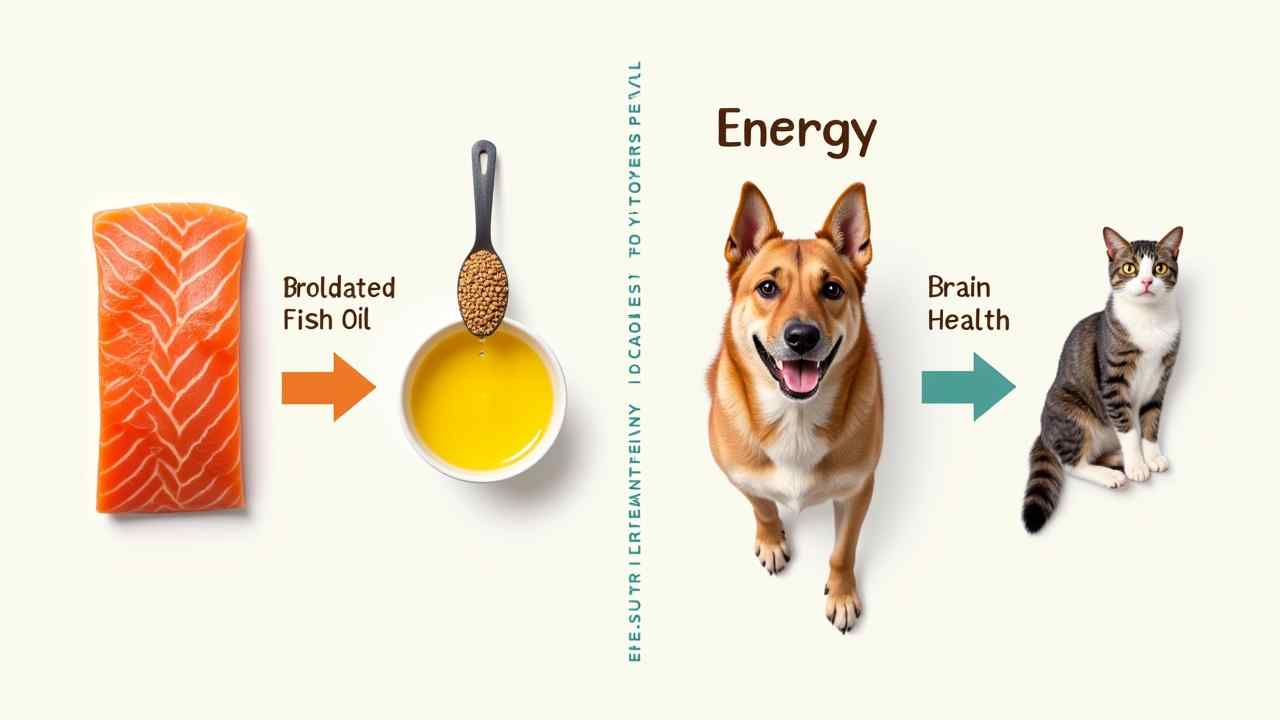
🐾 The Role of Fats in Animal Diets (A Guide to This Essential Nutrient)
🐾 A Guide to the Role of Fats in Animal Diets 🐾
The word "fat" often has a negative connotation. In our own diets, we are often told to limit it. This can lead pet owners to wonder about their animal's food. So, what role do fats play in animal diets?
The truth is, fat is not the enemy. In fact, it is an absolutely essential and vital nutrient for animals. It is a cornerstone of their health and well-being. A diet that is too low in fat can be very harmful.
This guide will explain the crucial functions of fat. We will cover why it is so important for your pet. Let's explore this essential part of animal nutrition. ✅
🤔 What is the Primary Role of Fat in an Animal's Diet?
The number one role of fat is to provide energy. Fat is the most concentrated source of calories. It provides more than twice the energy per gram as protein or carbohydrates. This is incredibly important for active animals.
This dense energy source fuels your pet's daily activities. It helps them to run, play, and explore. For working dogs or very active pets, fat is the most critical fuel source in their diet. It provides the stamina they need to thrive.
- What Are "Essential Fatty Acids"?
This is a very important concept. Certain types of fats are called "essential." This means the animal's body cannot produce them on its own. They must be obtained from their diet. The two main types are:
- Omega-6 Fatty Acids: Important for skin health and reproduction.
- Omega-3 Fatty Acids: Crucial for reducing inflammation, supporting brain function, and joint health.
Sources like fish oil (from salmon or anchovies) are rich in Omega-3s. High-quality pet foods are carefully formulated to include the right balance of these essential fats. 🐟
- How Do Fats Help with Vitamin Absorption?
This is a vital but often overlooked function. Certain vitamins are "fat-soluble." This means they can only be absorbed by the body in the presence of fat. These important vitamins are A, D, E, and K.
Without enough fat in their diet, an animal cannot absorb these nutrients. This can lead to serious deficiencies. This affects everything from their vision (Vitamin A) to their bone health (Vitamin D).
✨ What Are the Visible Signs of a Diet Rich in Healthy Fats?
One of the most visible answers to "what role do fats play in animal diets" is your pet's appearance. Healthy fats are absolutely essential for a healthy skin and coat. A diet with the right amount of Omega-3 and Omega-6 fatty acids will result in a soft, shiny coat.
It also helps to maintain a healthy skin barrier. This can reduce dryness, itching, and flakiness. A beautiful coat is a clear external sign of good internal health. A well-fed dog enjoying a walk on a crisp autumn day here in Bursa will have a coat that gleams in the sun. 🍂
- Does the Type of Fat Matter?
Yes. While fat is essential, the quality and quantity matter. Too much fat can lead to obesity. A diet that is suddenly very high in fat can also trigger a painful condition called pancreatitis. This is why it is important to feed a balanced, veterinarian-approved diet.
Never give your pet large amounts of greasy table scraps. The fat in their commercial diet is carefully selected. It is there in the right amounts to support their health from the inside out. 🥩